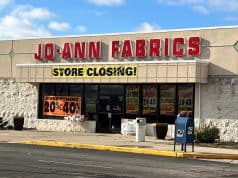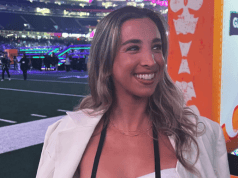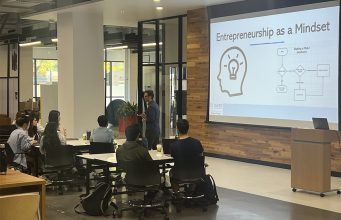 This year marks the 75th anniversary of March Madness and for the fourth time Atlanta will play host to the Final Four. Some fans may be regretting their bracket decisions, but two Emory University marketing professors are taking a different look at the teams. Dr. Michael Lewis and Dr. Manish Tripathi recently launched the website sportsmarketingprofessor.com to create a dialog around sports branding and fan loyalty.
This year marks the 75th anniversary of March Madness and for the fourth time Atlanta will play host to the Final Four. Some fans may be regretting their bracket decisions, but two Emory University marketing professors are taking a different look at the teams. Dr. Michael Lewis and Dr. Manish Tripathi recently launched the website sportsmarketingprofessor.com to create a dialog around sports branding and fan loyalty.
What’s sportsmarketingprofessor.com all about?
Manish: Generally people use the moneyball phenomena, thinking of new metrics and new ways to examine sports, whether it’s from an operational standpoint or to rank factors. In a way, we’re doing that within the context of branding, taking a marketing construct and applying it to the sports world.
Mike: We are taking marketing science to understand how marketing works for teams, leagues and players. The role of the marketing manager is growing marketing assets. One type of asset is the brand equity or brand worth. Even for someone not familiar with marketing terminology, we all can understand that Coca-Cola and McDonalds are high power brands. The other side is related, the value of your customer relationships. Our focus has been identifying ways to measure and rank these types of assets.
This isn’t your typical academic journal fare, so why the focus on sports?
Mike: Manish and I are both sports fans and have done some research regarding sports in the past. Our research within the arena of sports provides an opportunity to offer intellectual content from Emory that may not fit as well in academic journals. It’s an effort to reach out to the broader community with something more widely appreciated and of more general interest.
How do you assess the brand equity of a team?
Mike: First we looked at how teams preformed in terms of revenue relative to what you’d expect they would receive based on how well they played. If a team’s making a lot more money than justified by the quality of the product on the court or field, that indicates some level of brand equity or fan loyalty. For example, Minnesota, in the Big Ten, had really significant brand equity despite the team not being known as a traditional powerhouse. This suggests that their fans come out regardless. On the other hand, Michigan has done very well this year. However, when you look at it historically, attendance falls pretty rapidly when they don’t perform well.
Manish: What’s really significant about our research is that we looked at a team’s record over the course of 10 years. Often times you’ll hear sports casters or experts talk about what they think a school’s value is based on if there’s a big following, but this was actually putting numbers behind that. We were able to measure a school’s objective performance, the proven quality of their product.
Does brand equity build over time equally for all teams or are some wins bigger than others?
Manish: From our research we have some idea of what the performance of a team going to the tournament or making the Final Four does for the brand equity. Recently we compared that to what the coach is actually getting compensated. There’s a lot of talk about Florida Golf Coast University. Number 15 seed and not very well known but for the first time, they have made it to the tournament. For some schools that have had a lot of success, making the tournament isn’t good enough. You really have to make it to the Final Four or win to have a major impact on brand equity.
Mike: In comparing the brand equity to what the coach is compensated, we found a lot of disparity. Looking at this comparison, helps put into perspective aligning incentives. You can give the coach incentives to create brand equity by being successful.
How do general sports fans benefit from the research being shared through sportsmarketingprofessor.com?
Mike: I think everyone realizes at this point, even when we think of college sports, these are businesses. If you want to understand why a league is operating in a certain way or why your team isn’t investing in a big name coach, I think taking a step back and looking at the business side of it will be of interest to fans. You can also make a case that for some teams with high brand equity but not much historical success, this research allows fans to point a finger at the athletic director, at the college level, or the general manager, at the pro level. The argument could be that they aren’t investing enough based on how loyal the fans have been.
Once the Final Four is over, what’s next?
Manish: We’ll be rolling out content as different sporting events occur. The questions for each sport are a bit different. Baseball season starts in April and the NFL draft is later in April, so we’re looking forward to putting out some content surrounding those in the near future.
To learn more checkout sportsmarketingprofessor.com and follow Mike and Manish @sportsmktprof










